The legacy of Victorian restoration
Documents
A twenty-first-century restorer is forced to be respectful of medieval work, if not so already: a thorough evaluation of the structure is recorded in several media before a scheme of works is designed, and the proposals are subject to the scrutiny of expert committees, diocesan boards and charitable bodies; preservation is aided by modern technical advances, and new stonework is often visually distinguished from the old to aid future restorations. In contrast, when examining Victorian restorations of Romanesque buildings, there is the frequent suspicion that if money allowed, there was little to stop the patron from doing much more than was strictly necessary. Charles Brereton – probably the surgeon of that name active in Beverley from the 1820s – addressed a local society in 1855 and named the nearby Routh church as an instance of the unnecessary replacement of a twelfth-century doorway, and he described the medieval Scorborough church as needing only "a small outlay of money to restore the simple little fabric": the old building was replaced within a few years by an entirely new one designed by Pearson for a powerful local patron. Brereton admitted he was not an architect so he would have been unable to judge the true state of either building: his interest was antiquarian rather than professional. He had misgivings about some restorations, yet he concluded his address by appealing for steps to be taken to ensure the restoration of the dilapidated church at Kirkburn (Brereton 224, 234).
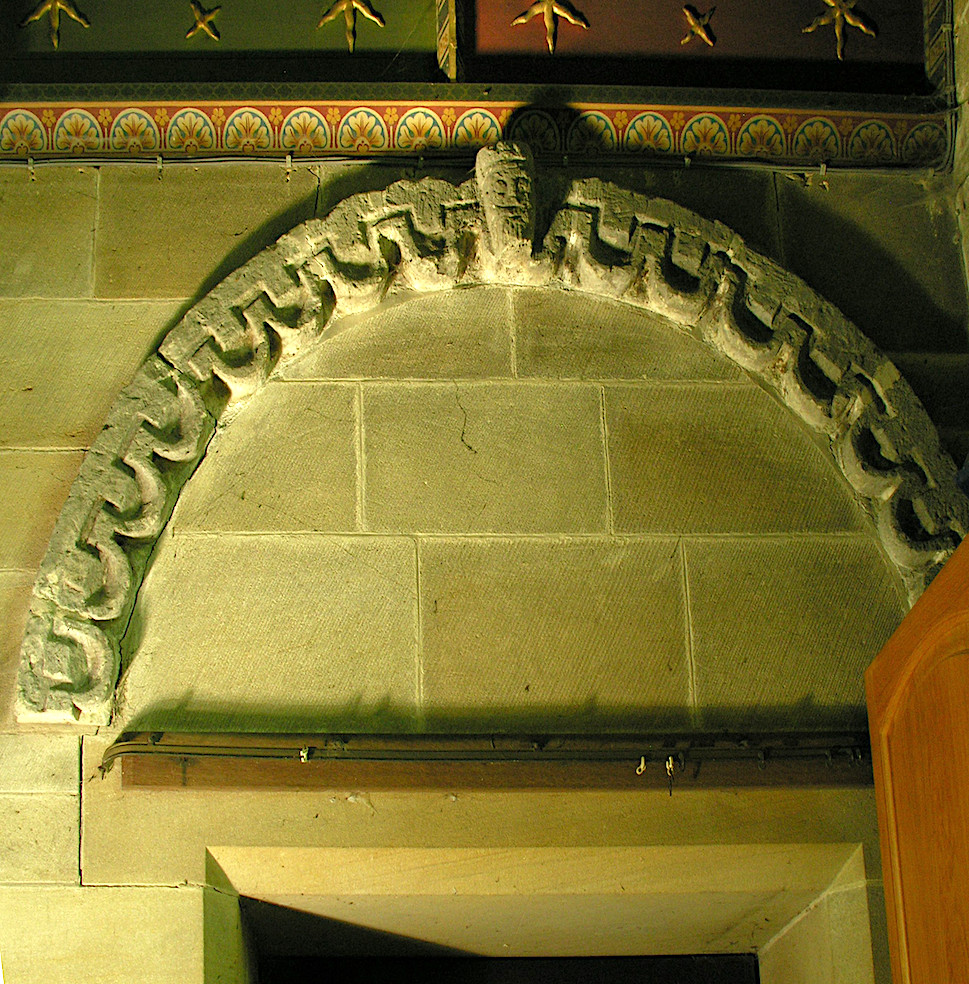
West Lutton, the arch reset in the vestry (1872-5).
Also in the East Riding, the church at West Lutton was restored in 1872-5 by G. E. Street for the second Sir Tatton Sykes. Of the medieval building, a single arch from what was almost certainly its south doorway survives, reset in the vestry. This arch is in quite good condition, but there is no clue as to how large the original doorway was, or what else it comprised. The medieval building is ignored in a sumptuous monograph later produced to celebrate Street’s work for the Sykes family; it illustrates, in colour, details of the Victorian furnishings (Bayly 9 ff.). The legal system of granting a faculty, that is, a licence from the diocese to the parish for work to proceed on stated lines, was well established by this period but faculty papers do not always exist. This is the case for all but a few of "the Sykes churches" in the East Riding; was application thought unnecessary, or nodded through over dinner, or is the lack of papers just an accident of survival? Maybe the Victorians’ distaste of "unfinished" or "crude" sculpture goes some way to explain those cases of complete, or almost complete, destruction like West Lutton, but the lack of documentation could indicate a guilty conscience, or at least a dislike of constraint, in a powerful patron.
Photographs
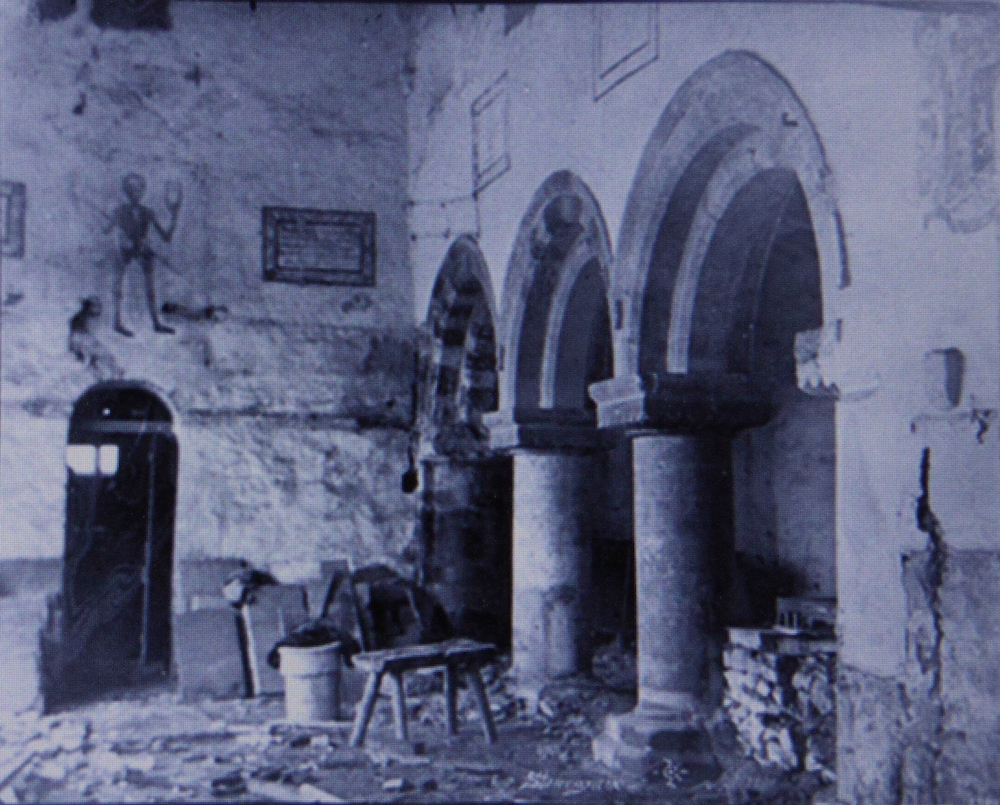
Stonegrave, the nave during restoration (c. 1862).
Photography made great strides in the 1840s and 50s, to the extent that photographs could be taken during the Crimean War and the Indian Mutiny, and the Queen sat for her photograph in 1860. Despite the usefulness of the invention, methodical records of the earlier state of a building seldom exist – just the occasional spectacular view of an un-roofed church, or a font surrounded by rubble; there is a tendency to show the large view of architecture and not the smaller details of sculpture. It is rare to find systematic photographs; three that survive of the restoration at Stonegrave were taken c. 1862 by the architect George Fowler Jones (negatives in the Science and Society Picture Library); and there are several useful ones of the restoration at Riccall that are now in private hands. Perhaps other libraries have informative collections; the archives of the V&A + RIBA Partnership are massive but largely uncatalogued, and there are, of course, other libraries of photographs, and private collections.
Drawings
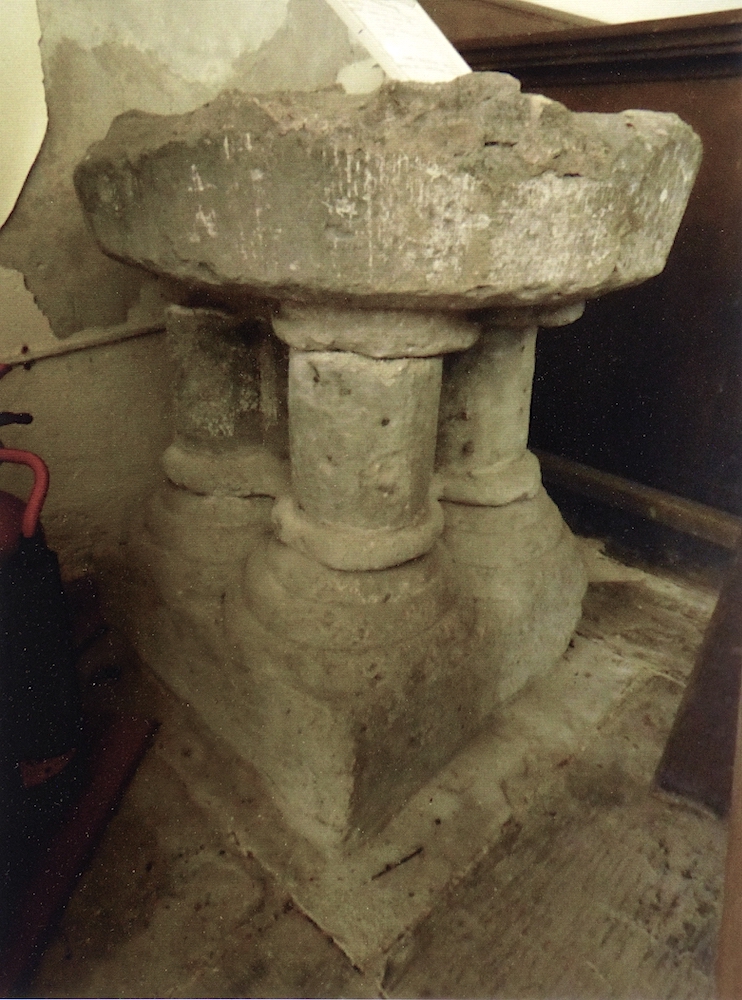
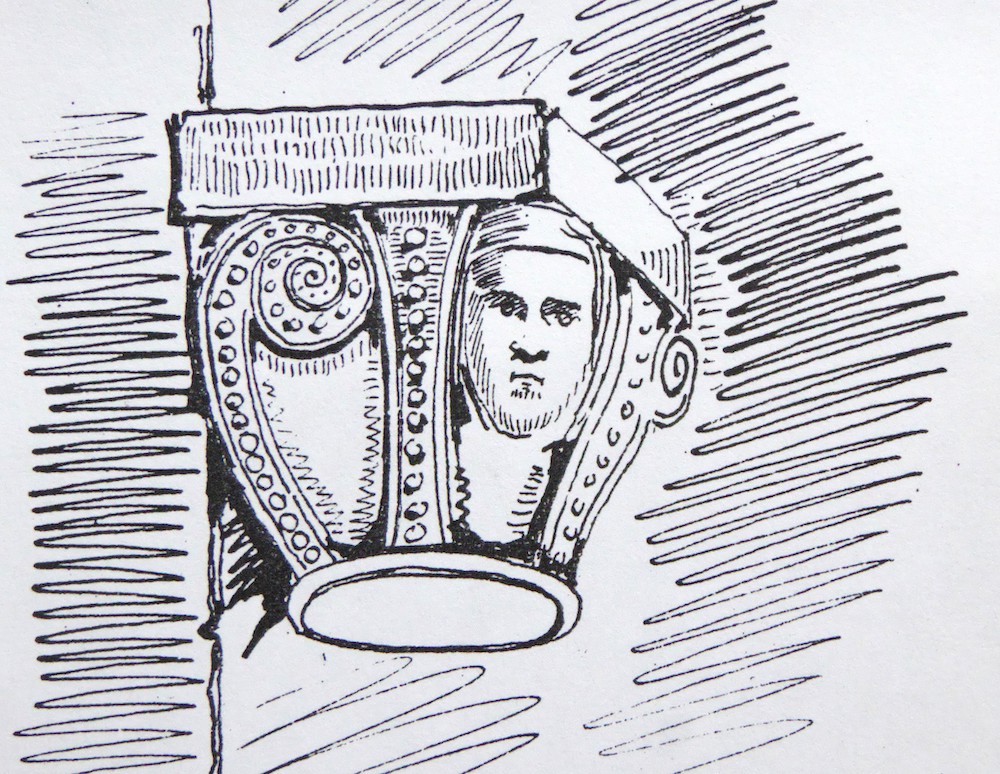
Left: Great Givendale, the font in 2018. Right: Kirkburn, Ada Brereton’s drawing of a capital reused in medieval times as a corbel (c. 1850).
At Great Givendale, the evidence of an old road-mender has been passed on: "he had seen carved stones ready in heaps to be broken up ... [and] but for the Misses Singleton the fine Norman chancel arch would have gone too" (Leadman). The remains of the Romanesque font, now in the church, were returned from the grounds of Givendale House. If the ladies had had a drawing-master we might have seen something of the corbels, which are particularly varied and interesting in the East Riding. Architects were trained in drawing individual antiquities or whole buildings — as Pearson was as a young man – but if this practice was routine, much of that work has disappeared. A touring antiquarian or the vicar’s wife may have left a watercolour or sketch of the old church, but it was all too easy for them to romanticise the view, or change the scale of the "best" parts; there are several worked-up sketches of pre-restoration Kirkburn church which have new information, but include fictional details (Brereton).
Architect Chantrell drew Fangfoss church before restoration, and as a pair with that drawing, he drew his idea of the new church; the old building looks as unstable as the new is true (Webster, Chantrell, 152, 153). At Barton-le-Street, the drawing of the old church for the faculty application makes the ridge of the nave roof rather more sunken than in a pre-restoration photograph (Borthwick Institute Fac. 1869/10; Butler 82, from NE; Smith, figs 6.48 and 6.50, 6.51). Certainly, the three heavy buttresses on the nave north wall suggest work might have been needed, but I can never come away from Barton-le-Street without wondering what we would have seen there if the church had not been turned outside-in and back to front by the Victorians. Was the elaborate corbel-table, now seen inside the chancel and porch, always inside? It is not visible in the photographs though it is indicated on one drawing. Would collapse and acid rain have deprived us of this treasury of sculpture? Or would there be something that a later generation could have salvaged with more care and respect?
Wilful changes
The Victorian period is often characterised as self-confident; it was an age that could, at one extreme, think of re-roofing Kirkstall Abbey, or at the other, suggest demolishing the seventh-century church at Escomb — neither of which ideas materialised. The Victorian patron and his architect thought that they knew better than those who had gone before, and in many ways they did, but at Fangfoss, the re-use of the voussoirs from the interior arches on a new south doorway, as illustrated in Part II (image), only repeated the decay which had been suffered by the twelfth-century doorway, and this might have been foreseen (Allen 412). Patrons and restorers were confident in their own powers to the exclusion of contemporary disquiet such as that expressed by Charles Brereton, and they were largely insensitive to their medieval predecessors, who were not without knowledge and ideas of their own.
Kirkburn, Yorkshire
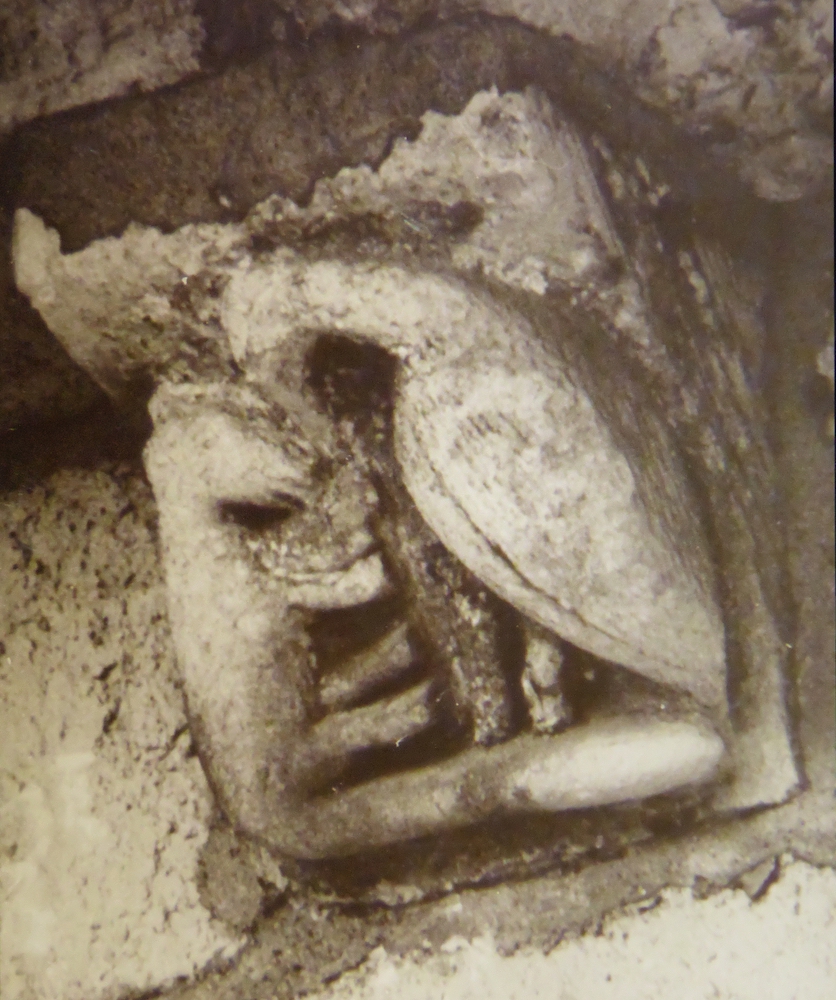
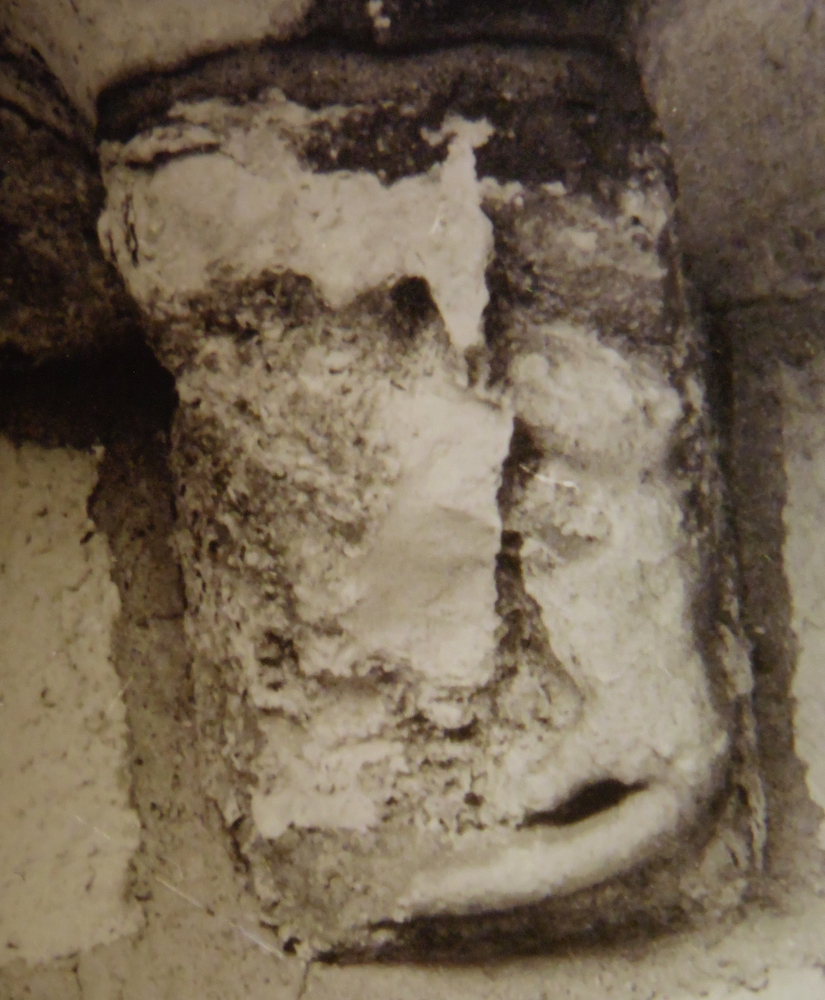
Left: Kirkburn, original corbel, the Crane drinks. Right: Kirkburn, Victorian corbel, the Crane thirsts.
An example of this insensitivity can be seen at Kirkburn church, restored in 1856-7 by J. L. Pearson (Wood, "The Augustinians," 5-7; 23). The corbels are a precious series, quite untouched on the north side of the church, where the soft limestone weathers sadly, softly mouldering away. On the south side, the side with the great doorway and the only side that need be seen by visitors coming in carriages, a number of corbels were replaced. Some of them are reasonable efforts at reproducing a motif that is common locally or they are a copy of an old one preserved elsewhere on the building, but occasionally the new corbel reveals a lack of understanding of medieval intentions. For example, one original corbel shows the scene of the second meal in the fable of Fox and Crane: there is a tall jar from which the Crane can drink but the Fox can only claw at. This second meal is a metaphor for the heavenly reward of the Crane and the rejection of the Fox, in accord with the theme of other corbels on this church which emphasise the imminence of Judgment Day. The same fable was recorded by John Carter in 1791 at St Margaret’s, Walmgate, York, on a capital now replaced by a different subject (Carter, Ancient Sculpture). Although both meals were shown there, the first meal is not essential, and indeed it diverts attention from the promise in the second: by showing both meals the onlooker is being educated in Aesop rather than the New Testament. The tomb-slab at Bridlington Priory has only the second meal, and the example at Kirkburn is likely to conform to that Augustinian usage. However, in the restoration, an additional corbel was carved showing the first meal, with the Fox lapping from a saucer and the Crane unable to sup – the less amount of wear and the treatment of the legs of the creatures on this corbel suggest it is correct to see this one belonging to the restoration. I wonder what Pearson thought of the addition – it is unlikely to have been his idea. Just as Chantrell and others debated the design theories that had guided medieval architects, surely there must have been a similar recognition among sensitive restorers of the sculpture, that it also had an older, alien, set of values, and that they were handling a resource they could not fully evaluate.
Stone, Buckinghamshire
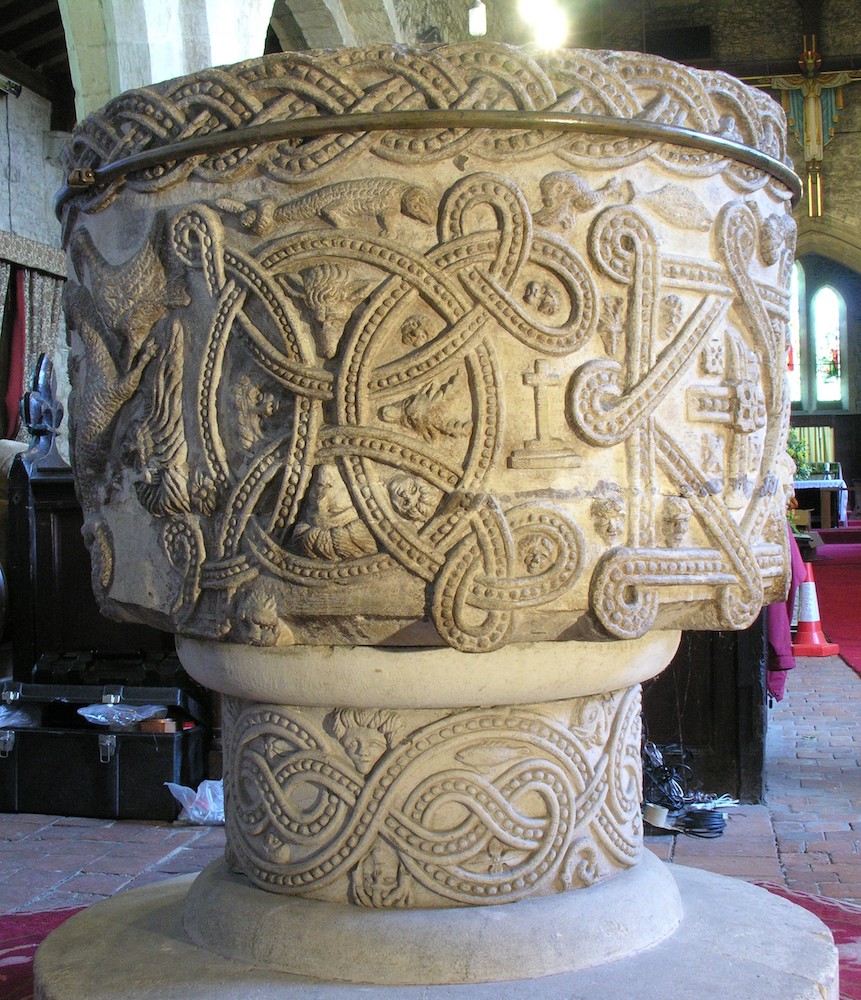
Stone, font and base.
Another restoration illustrating the Victorian sense of superiority, extending to an active disregard for the past, is that of a font now in a church near Aylesbury. In the 1840s, J. S. Ancona was a builder and architect working on the church at Stone; he was shown a twelfth-century tub font that had lately been given to the vicar. Subsequently, Ancona wrote a short account of the restoration his firm had applied to it to make it fit for use again. He also pieced together the history of the font over the eighty years between its being discarded from a church near Reading and given to the vicar of Stone: the font had first lain out in the churchyard at Hampstead Norris, then it had been used in turn as a mounting block, a water trough and a garden ornament, and latterly had been passed round as an antiquarian curiosity; whether much of its protective whitewash could have survived all this disturbance is doubtful. Ancona had a great sense of achievement and an approving readership, but he criticises others and exaggerates in the flamboyant way Victorians often did, "laying it on with a trowel" rather too thickly (Ancona; Webb). Reading between the lines there is a different story; he must have known the item had been changed by being restored:
When it first came into our hands it exhibited only the faintest signs of the elaborate sculpture with which it was adorned; nor was it without considerable trouble, in the hands of a very excellent workman, that the whole was accurately restored. The result has, however, I think, amply repaid both the trouble and expense.... I should observe, that the upper portion, viz. the basin itself ... is the part referred to in the foregoing observations; the base is entirely new.
The font was reinstated and is in use today; there can be no doubt that Ancona’s workman had a lot to do, for the stone had split horizontally, needed patching, and is supported by an iron band round the rim. Yet even with such defects and after such a history, all its surfaces are clean and the motifs sharp; it looks extensively re-cut. The difference between the inner and outer diameters of this font, the thickness of its wall, can be estimated as 75mm, but this is less than for large cylindrical fonts seen in Yorkshire, whose walls average around 100mm in thickness; of course, the quality of the stone used might account for much of the difference. The clearest proofs of re-cutting, however, are the many little grotesque heads, which are exactly the same facture as those on the admittedly "entirely new" base. No craftsman could match old work so perfectly; one type of little head resembles something at Autun or Vézelay, but nothing in England. Ancona asked for suggestions from readers of The Builder to solve the "symbolical sculpture with which it is so profusely decorated," but much of that sculpture was due to his own workman. The font is an over-enthusiastic Victorian improvement which leaves us now unsure of quite what was carved in the first place.
Great Givendale
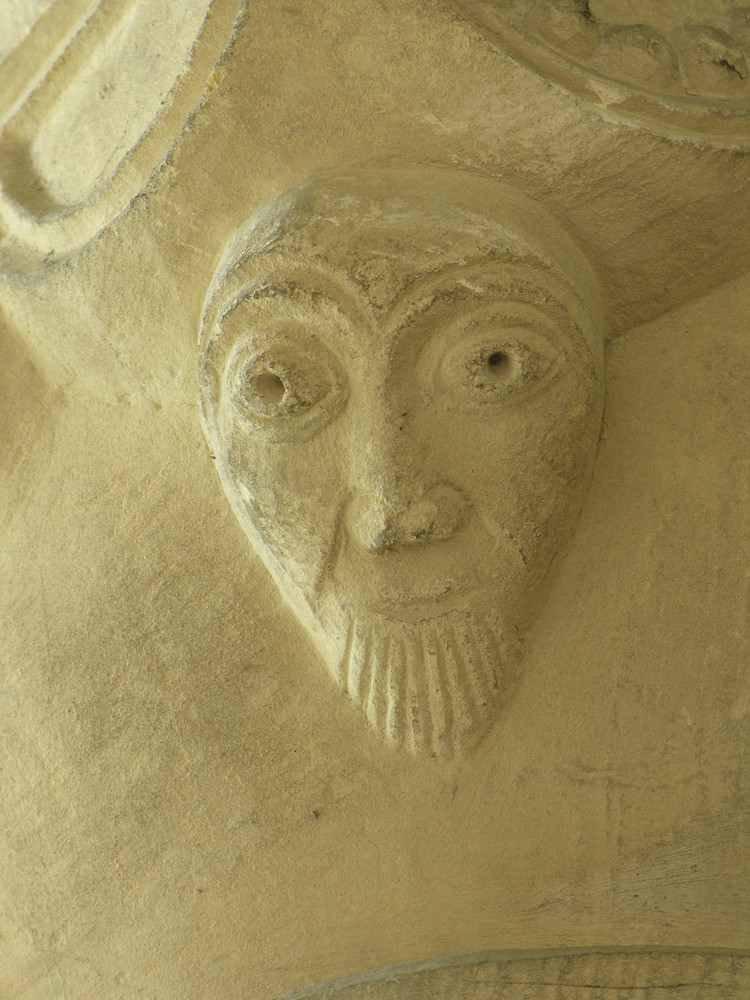
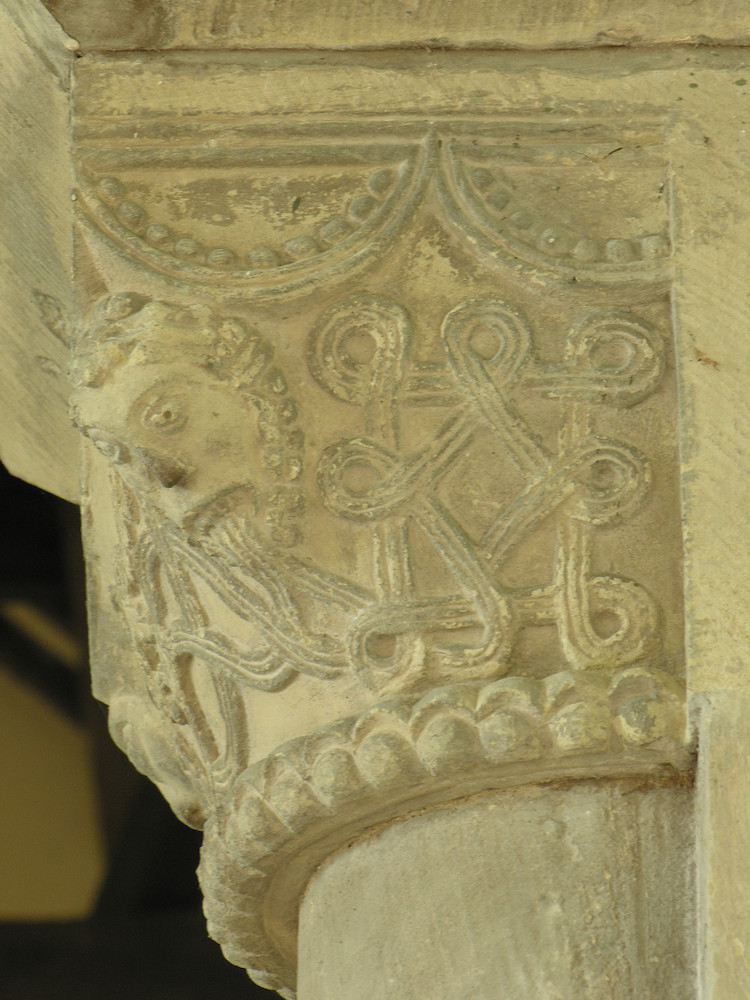
Left: Great Givendale, north capital of the chancel arch, Right: Great Givendale, the south capital.
The font at Stone is an extreme case of self-confidence; there are other examples of the "cleaning-up" or reworking of original Romanesque sculpture, such as the chancel arch at Great Givendale, mentioned above as having been saved from demolition by the ladies in the big house. The present capitals are original, but there is a hint of reworking in the smooth ground, perfect features and bored eyes of the south capital which is relatively empty compared to that on the north side.
Burton Agnes
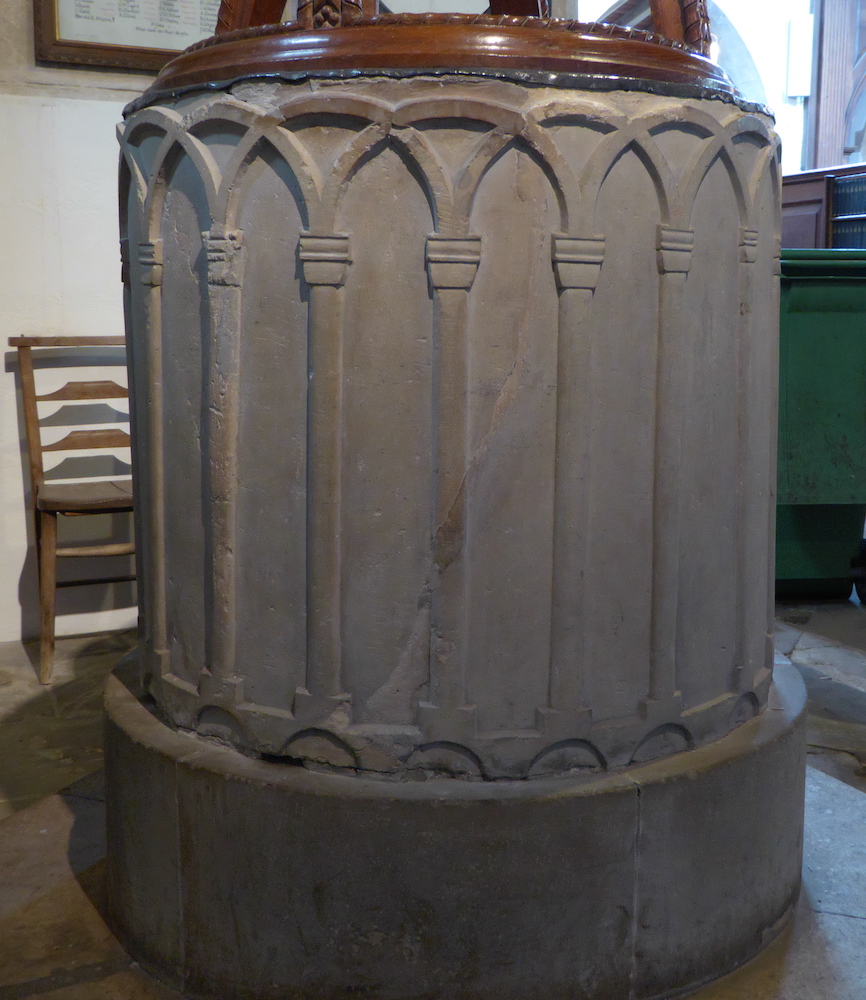
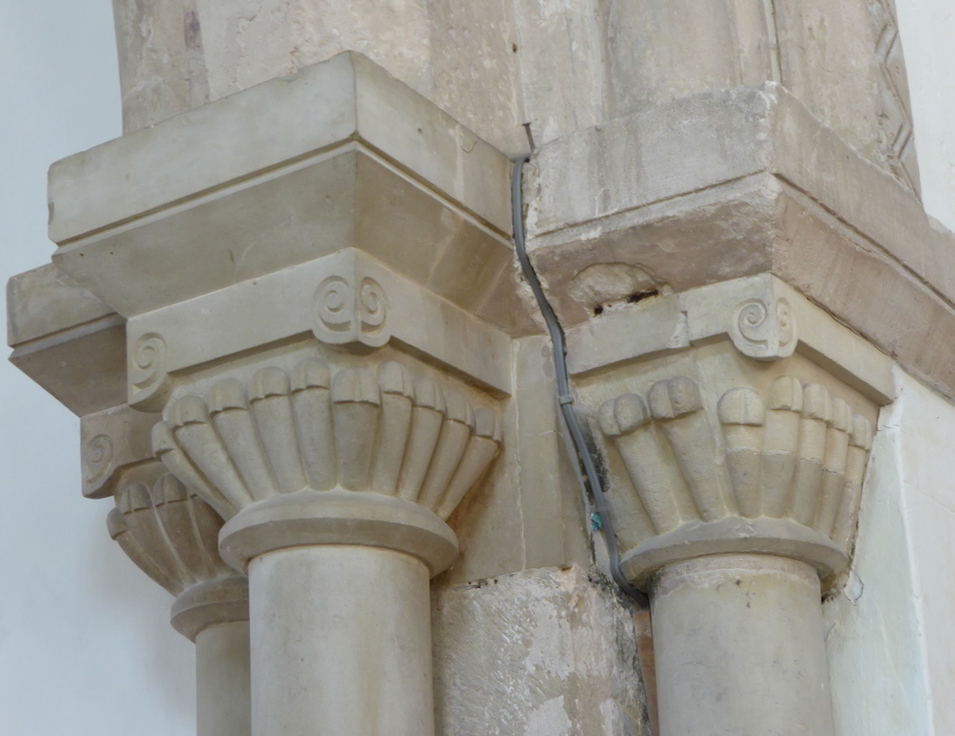
Left: Burton Agnes, font. Right: Burton Agnes, capitals on the south side of the chancel arch.
Another example of re-cutting is the cylindrical font at Burton Agnes. This has a nineteen-bay arcade — a feature that would have worried a Victorian numerologist since it must be hard to show that nineteen was a particularly significant number for a font; it is probably the consequence of incomplete setting-out, which is common in fonts on the Wolds. In the restoration, the blank arcade was regularised as far as possible; one of its nineteen columns was left as first made but the capitals are, inevitably, still at different heights. There were other "improvements" made at the same church in restoring the capitals of the chancel arch: probably all these leafy capitals were based on one example (on the second order on the nave side), for such thorough repetition, on all three orders including the chancel side of the arch, would have been very unlikely in the Romanesque in this area.
Created 15 January 2019